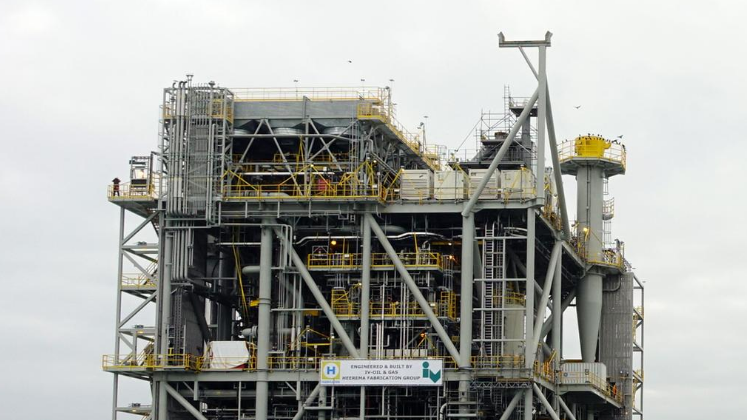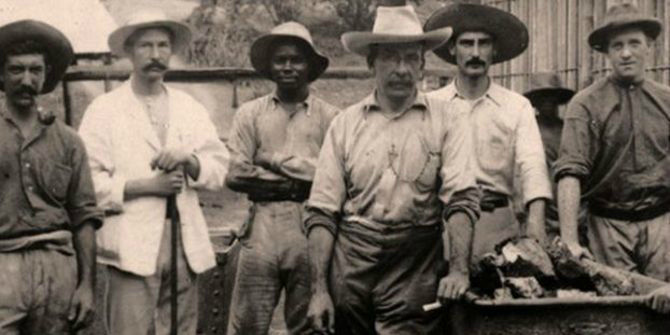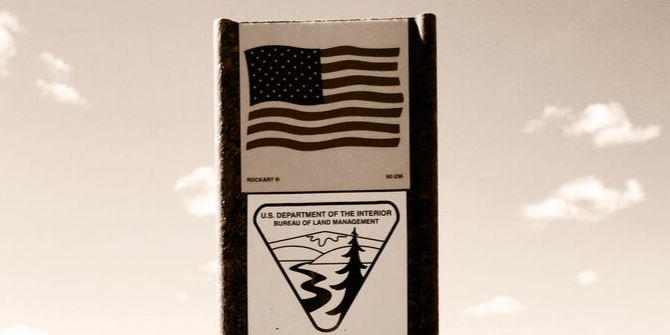In A Ritual Geology: Gold and Subterranean Knowledge in Savanna West Africa, Robyn D’Avignon explores the history of one of the world’s oldest indigenous gold mining industries: Francophone West Africa’s orpaillage. This is an urgent and impressive book that will be crucial reading for anthropologists and historians looking to understand decolonial methodologies, writes Dagna Rams.
A Ritual Geology: Gold and Subterranean Knowledge in Savanna West Africa. Robyn D’Avignon. Duke University Press. 2022.
 Find this book (affiliate link):
Find this book (affiliate link):![]()
A Ritual Geology is an urgent publication amid the wider context of the new scramble for African resources in the 21st century. In Senegal’s region of Kédougou, where the book takes the reader, the number of corporate mines has tripled since the early 2010s. As Robyn D’Avignon forcefully argues, the corporate enclosure of West African goldfields ‘threatens the future of one of the world’s oldest indigenous gold mining economies’ (6).
This economy is orpaillage – gold pawning – a term initially used by French colonialists to distinguish between African workers (orpailleurs) and French mineurs, which has since been adopted by Francophone West Africans to define themselves and their work. In A Ritual Geology, D’Avignon represents orpailleurs’ marginalised practices and voices as vital contributions to the debate about how to share nature’s resources. African artisanal miners have long been cast by all sorts of powerful actors as ‘backwards’. This book is a forceful rebuttal of such a worldview. D’Avignon minutely documents a mining tradition spanning centuries that has much to teach us about living with resources, sharing profits and integrating strangers into work.
The foremost contribution of A Ritual Geology is the representation of African miners as intellectual actors. This is different to more common representations that narrow in on technological limitations, emphasising mining’s ‘artisanal’ nature, its legal murkiness or cases of labour exploitation. D’Avignon does not claim that orpaillage is above reproach. She rather argues that it is a tradition not reducible to what it lacks compared to corporate mining.
To give orpaillage its due credit and context, D’Avignon undertakes her research with an utmost seriousness, combining a long ethnographic fieldwork in Senegal with oral histories, research in French colonial archives and fluency in archaeological sources. Thus armoured, she paints a rich picture of the West African goldfields past and present. A Ritual Geology adds to the scholarship that places Africans at the centre of global networks of innovation whilst demonstrating how colonial legacies silenced and devalorised them.

Image Credit: Image by Hans from Pixabay
The narrative begins in Senegal in a village in the Kédougou region in 2014. We meet a number of actors that make present-day mining worlds: miners from various ethnic backgrounds, representatives of a multinational mining corporation, geologists, chiefs and spiritual leaders. The next chapters reverse back into pre-colonial, colonial and post-colonial histories to explain the genealogies that forged this extractive context. We learn of the pre-colonial importance of gold as an open resource that mitigates the impasses of seasonal drought. We learn of goldfields’ importance as a refuge from enslavement and religious persecution at the hands of Muslim kingdoms. We also learn of goldfields having long and enduring significance as cosmopolitan sites of ritual innovation.
Many of the West African goldfields were englobed by French colonial expansion in the nineteenth century. Here, the author shows that the current marginalised place of indigenous mining and miners is ‘the outgrowth of an unfinished struggle over mineral rights that began with the colonial enclosures of mineralised land’ (8). The struggle placed the two groups of actors in opposition but also – and this is one of the important facts that D’Avignon’s research establishes – in coordination.
This coordination is evident in the crucial but understudied moment of mineral exploration. It is the ‘between’ time when resources are mapped and a specific group of actors – geologists – comes to the fore. While oftentimes geology is seen as the ur-scientific methodology, D’Avignon reveals just how far colonial and post-Independence geologists have relied on orpailleurs to map subterranean resources. She shows widespread practices of shadowing artisanal miners to draw geological maps. As such, the geologists were in effect making use of the otherwise devalorised skills of their West African counterparts – the titular ritual geology – such as the ability to tell deposits based on the taste and smell of soils or invent rituals to connect to the spiritual presence that controls resources.
D’Avignon dissects how the French colonial project differs from the parallel British ambitions better documented in the Anglophone literature. Notably, the French relied on orpailleurs for geological knowledge. The miners were also sources of labour, tax and gold. At the same time, the orpailleurs were never granted rights over the resources, which made their position precarious and based on changing notions of expediency rather than enduring recognition of their position in the extractive project.
The post-Independence governments continued a worldview that favours large-scale operations. As part of the resource sovereignty turn, there was a new mapping of resources, this time with geologists coming from across the Cold War divide. The pattern of that mapping, however, remained the same, namely making use of orpailleurs. Once Senegal liberalised in the 1990s and global metal demand skyrocketed, post-Independence mineral research became the basis for new corporate appropriations. The painting of this historical canvas is crucial to understand how orpaillage became a devalorised and criminalised economic pursuit. Its history meanwhile allows us to see what gets missed in the debates: namely that orpaillage has always been part of the extractive process, not as a retrograde practice at its margins but a crucial component at the core.
D’Avignon’s narrative in the final chapters comes back to the present day. We face again mining corporations which engage technologies that will ultimately deplete resources, rely increasingly on machines over labour and leave much less in the state’s coffers than they take abroad. The author shows how orpailleurs fight back by using different languages and practices, both political and ritual. One of the arguments that orpailleurs make is that they were the first to discover the mineral deposits. The book’s wealth of references and interrogations of colonial archives aides that cause. One can imagine it being used by orpailleurs to argue their case, which makes the scholarship doubly important.
A Ritual Geology is impressive. It is crucial reading for anthropologists and historians looking to understand decolonial methodologies. It should also find a readership among actors who intervene in mining worlds, be it as corporate employees, state officials or development agencies. The book ends with a resounding question: ‘What is our rightful share of the earth’s subterranean granaries?’ (206). As one reads the chapters, one gets a strong sense that ritual geology in West Africa holds an answer. We see how mining is conceived of not as a sole extractive pursuit but rather a livelihood meant to complement agriculture and stick to ritual limitations. We see how orpailleurs conceive of methods to divide their finds equitably between themselves and others, such as disabled members of the community who cannot mine themselves. In comparison, corporate mining does not seem to ask itself the question of how to share, let alone propose answers to it.
Note: This review gives the views of the author, and not the position of the LSE Review of Books blog, or of the London School of Economics and Political Science. The LSE RB blog may receive a small commission if you choose to make a purchase through the above Amazon affiliate link. This is entirely independent of the coverage of the book on LSE Review of Books.






